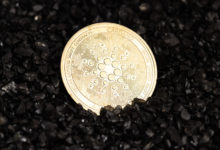Revolutionizing the Art World: An In-Depth Look at Art Tokenization

Have you ever dreamed of owning an artwork by Picasso or Jackson Pollock? And what if such artworks could do better than other financial investments?
Sygnum, a Swiss digital banking and asset management platform, is making it possible. It offers the opportunity to invest in iconic works. These include works from renowned artists like Picasso, Andy Warhol and Jeff Koons through its platform.
Sygnum’s foray into art opens up opportunities for art lovers and investors alike. They will be able to buy and even trade museum-quality artwork with cryptocurrency. Art tokenization makes it possible for everyday people to own artworks from world-famous artists using crypto.
Sygnum partners with Artory, a digital registry for the art market, to offer tokenization services for art collectors and investors. Sygnum provides secure storage and transfer of digital tokens representing art ownership. They also enable trading of these tokens on secondary markets.
In addition, Sygnum participated in a number of other art tokenization projects. The bank has worked with the Museum of Modern Art in New York to tokenize some of their artworks. They have also partnered with other institutions and companies to tokenize other collectibles, such as stamps, coins, and vintage cars.
What Are Some Examples of Famous Tokenized Pieces of Art?
Tokenization has allowed a number of masterpieces to be made available for purchase as digital tokens.
Here are a few examples:
- “The Last Supper” by Leonardo da Vinci: In 2019, a Russian startup called ARTEX launched a tokenization project for “The Last Supper,” which allowed investors to purchase digital tokens representing a stake in the painting. The tokens were backed by a physical copy of the painting, which was displayed at an art museum in Moscow.
- “The Scream” by Edvard Munch: In 2021, a company called Maecenas launched a tokenization project for “The Scream,” which allowed investors to purchase digital tokens representing a stake in the painting. The tokens were backed by a physical copy of the painting, which was displayed at the Munch Museum in Oslo.
- “The Persistence of Memory” by Salvador Dali: In 2020 Codex Protocol launched a tokenization project for “The Persistence of Memory,” which allowed investors to purchase digital tokens representing a stake in the painting. The tokens were backed by a physical copy of the painting, which was displayed at the MoMA in New York.
What Are the Benefits of Tokenized Art?
Tokenized art can provide a number of benefits to collectors and investors and the market. Some potential benefits of tokenized art include:
- Increased transparency and verifiability: Tokenization can make it easier to track and verify ownership of a piece of art, as the blockchain provides a transparent and immutable record of ownership. This can help to reduce fraud and increase confidence in the art market.
- Improved liquidity: Tokenization can make it easier to sell or trade a piece of art, as the transaction can be completed quickly and securely using the blockchain. This can increase the liquidity of the art market, making it more accessible to a wider range of investors.
- Fractional ownership: Tokenization allows for the creation of fractional ownership interests in a piece of art, making it more accessible to smaller investors. This can potentially open up the art market to a wider range of investors and increase overall demand for art.
Risks Associated With Tokenized Art
- Regulatory uncertainty: The art tokenization movement is still in its early stages, and it is not yet clear how it will be regulated. This can create uncertainty for investors and may impact the value of tokenized art.
- Lack of liquidity: While tokenized art can increase the liquidity of the art market overall, individual tokens may still be illiquid, particularly if they represent a smaller stake in a piece of art. This can make it difficult for investors to sell their tokens quickly or at a fair price.
- Valuation challenges: Valuing a piece of art can be subjective and complex, and this can be even more difficult when the art is represented as a digital token. It can be challenging to determine the fair value of a tokenized artwork, which can create risks for investors.
Does Fine Art Outperform Other Investments Like Stocks and Real Estate?
Fine art is an unconventional asset class. It does not behave like stocks, bonds, or real estate. As an alternative investment, it can diversify a portfolio. However, it is not usually considered a replacement for traditional asset classes. Factors like the artist’s reputation, the rarity and condition of the piece, and market demand have an impact on value.
Fine art’s value is also more volatile and less predictable than other asset classes. This is because it does not rely on specific financial metrics or performance indicators. It is hard to make generalizations about fine art’s performance compared to other investments. Some studies show that fine art can provide strong returns over the long term. However, it can also be more volatile and less liquid than other asset classes. This means it might be difficult to sell a piece of Picasso quickly if you need cash.
Can Owning a Tokenized Piece of Famous Work of Art Be a Good Investment?
Tokenized art can be a good investment for some people, but it is not always a good choice. Like any investment, it carries risks and benefits. Investors should carefully consider these before making a decision. One benefit of tokenized art is that it can provide a way to own a famous piece of art that may be financially out of reach.
Tokenization creates fractional ownership interests in a piece of art, making it more accessible to smaller investors. Tokenized art can also potentially provide liquidity not normally available in the traditional art market, making it easier for investors to buy and sell their tokens.
However, there are also a number of risks to consider when investing in tokenized art. Regulatory bodies have not yet determined how they will regulate the art tokenization movement, as it is still in its early stages. This can create uncertainty for investors and may impact the value of tokenized art.
Subjectivity and complexity can make valuing a piece of art difficult, and making the art a digital token can make this even more challenging. It can be challenging to determine the fair value of a tokenized artwork, which can create risks for investors.
Overall, investing in tokenized art is highly speculative and risky. Investors should carefully consider the potential risks and benefits before making any decisions. It is also important for investors to do thorough research and due diligence before investing in any tokenized art project. Despite the risks, art tokenization gives people who couldn’t afford to invest in art the opportunity to do so, one tokenized piece at a time.
Related
How Art Can Die Is Using Blockchain and NFTs to Revolutionize the Art Industry
The History of Art Tokenization. Part I
IOTA Launches Shimmer Network for Zero Fee Asset Tokenization






 Bitcoin
Bitcoin  Ethereum
Ethereum  Tether
Tether  USDC
USDC  Dogecoin
Dogecoin  Cardano
Cardano  TRON
TRON  Chainlink
Chainlink  Stellar
Stellar  LEO Token
LEO Token  Hedera
Hedera  Bitcoin Cash
Bitcoin Cash  Litecoin
Litecoin  Monero
Monero  Dai
Dai  OKB
OKB  Gate
Gate  Ethereum Classic
Ethereum Classic  Cronos
Cronos  VeChain
VeChain  Cosmos Hub
Cosmos Hub  Algorand
Algorand  KuCoin
KuCoin  Stacks
Stacks  Maker
Maker  Tether Gold
Tether Gold  IOTA
IOTA  Theta Network
Theta Network  Tezos
Tezos  Zcash
Zcash  TrueUSD
TrueUSD  NEO
NEO  Polygon
Polygon  Dash
Dash  Zilliqa
Zilliqa  Synthetix Network
Synthetix Network  0x Protocol
0x Protocol  Qtum
Qtum  Basic Attention
Basic Attention  Decred
Decred  Siacoin
Siacoin  Holo
Holo  Ravencoin
Ravencoin  NEM
NEM  DigiByte
DigiByte  Enjin Coin
Enjin Coin  Ontology
Ontology  Nano
Nano  Hive
Hive  Waves
Waves  Lisk
Lisk  Status
Status  Steem
Steem  Numeraire
Numeraire  Pax Dollar
Pax Dollar  BUSD
BUSD  Huobi
Huobi  OMG Network
OMG Network  Bitcoin Gold
Bitcoin Gold  Ren
Ren  Bitcoin Diamond
Bitcoin Diamond  HUSD
HUSD  Bytom
Bytom